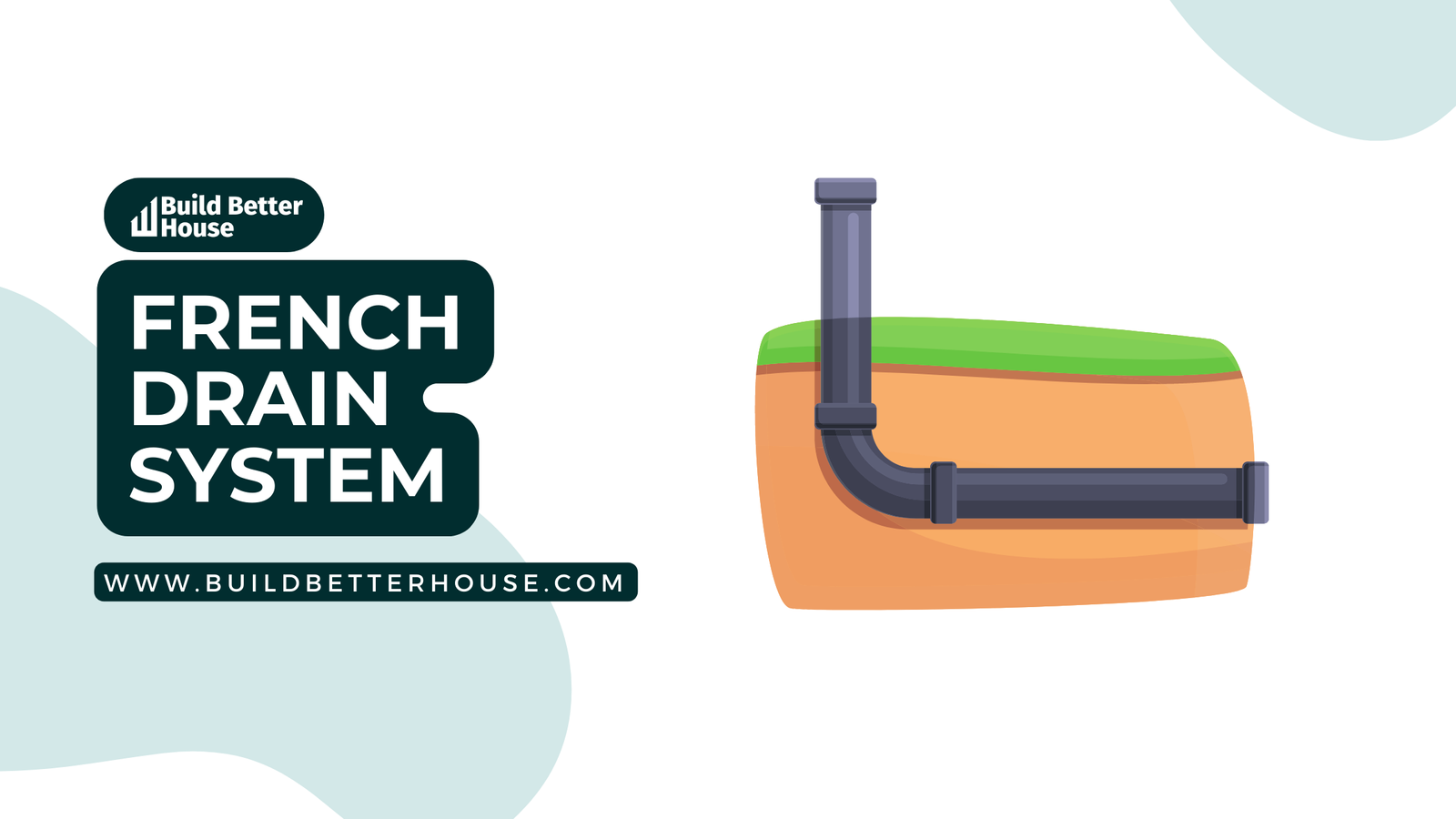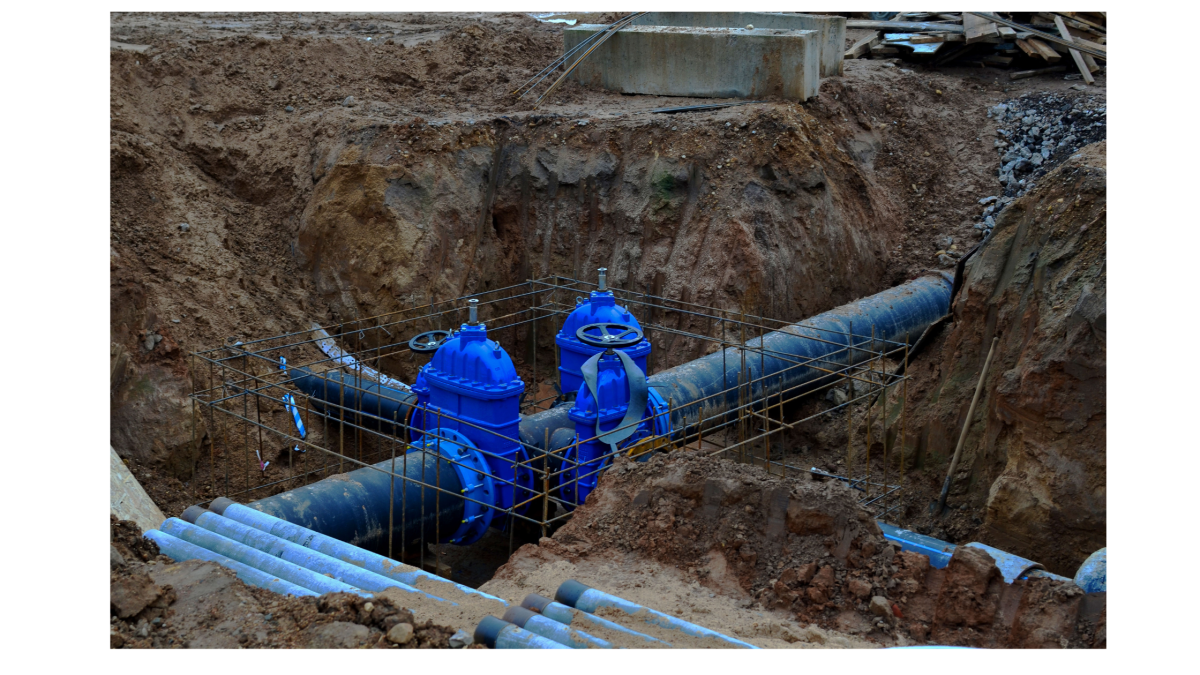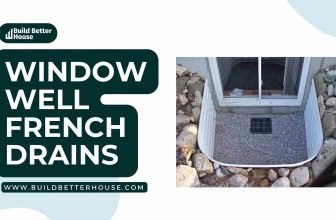French Drain System: A Comprehensive Guide for Proper Installation

A French drain system is an effective and versatile solution for managing excess water on your property. These drains work by redirecting water through a trench filled with gravel or rock, or both, and often includes a perforated pipe. By utilizing gravity, the water follows the path of least resistance and flows freely downhill towards a suitable outlet. French drains can help protect your home’s foundation and prevent water-related issues like mold, mildew, and water damage.
There are several components that make up a French drain system, including the trench itself, the gravel or rock, and the perforated pipe. Proper installation is crucial to ensuring the system functions effectively and requires careful planning and attention to factors like the location of pooling water, the slope of the land, and the outlet for runoff water. Additionally, regular maintenance and prevention measures like debris removal and clearing clogs are necessary to keep your French drain in optimal working condition.

Key Takeaways
- French drains efficiently manage excess water on your property by utilizing gravel-filled trenches and perforated pipes.
- Proper installation and regular maintenance are essential for optimizing the performance of a French drain system.
- Considerations such as water sources, slope, and outlet location play a crucial role in the success of a French drain system.
French Drain System Components
A French drain system is an effective solution for directing excess water away from your property. This system includes several essential components that work together to keep your property dry and ensure proper water drainage. In this section, we’ll go over the main components of a French drain system: Perforated Pipe, Gravel and Stones, Filter Fabric, and Trench.
Perforated Pipe
The perforated pipe is a crucial part of the French drain system. This pipe is usually made of PVC or corrugated plastic and contains small holes or slits along its length. As water flows through the gravel surrounding the pipe, it enters the perforations and is then carried away from the problem area. When installing your French drain, be sure to choose a pipe with the appropriate diameter and perforation size for your needs.
Gravel and Stones
Gravel and stones play a vital role in the French drain system by allowing water to flow freely around and into the perforated pipe. Choose a mix of sizes and types of gravel or crushed stones to ensure adequate drainage. You’ll typically need to fill the trench with a few inches of gravel before laying the pipe, and then continue to cover the pipe with more gravel until it reaches the desired depth.
Filter Fabric
Filter fabric is an essential component in preventing soil and debris from clogging your perforated pipe and impacting the effectiveness of your French drain system. This fabric is often made from a sturdy, non-woven geotextile material and is laid directly over the gravel layer before the pipe is placed. Once the entire system is in place, you’ll cover the top layer of gravel with another layer of filter fabric to act as a barrier between the gravel and the soil.
Trench
The trench is what houses all the components of your French drain system. When digging your trench, you’ll want to ensure it follows a downward slope throughout its length to encourage proper water flow. The width and depth of the trench should be determined by your specific drainage needs and existing landscape conditions. Keep in mind that the depth of the trench can affect the effectiveness of your French drain, so it’s essential to plan carefully and follow best practices when excavating.
French Drain Installation Process
Site Assessment
Before starting the French drain installation, assess your site to determine the best location and direction for your drain. Check for any utility lines, evaluate the slope, and decide where to direct the water for proper drainage.
Trench Digging
Once you’ve assessed your site, start digging the trench. Keep in mind that the bottom of the trench should slope (usually at least 1% gradient) to enable water flow towards the discharge point. Make sure the trench is wide enough to accommodate the drainage pipe and the necessary amount of gravel or stones.
Pipe Placement and Connection
In the next step, select the appropriate perforated drainage pipe for your French drain system. You can choose between rigid PVC or flexible drain pipes. Lay the pipe in your trench ensuring it follows the intended slope from the starting point to the discharge location. Connect sections of the pipe as needed with appropriate fittings.
Filling with Gravel and Stones
Fill the trench with a few inches of coarse, washed crushed stone or gravel that is at least ½ inch in diameter. This layer will provide a stable base for the perforated pipe and allow water to flow freely around it.
Covering with Filter Fabric
After placing the pipe and gravel in the trench, cover everything with water-permeable landscaping fabric. This material is meant to discourage weed growth and prevent soil particles from entering the drain system.
Backfilling and Landscaping
Once your French drain system is in place, backfill the trench with soil that you removed during the digging process. Be careful not to damage the pipe or filter fabric while backfilling. Finally, landscape the area to make it aesthetically pleasing and maintain the functionality of your drainage system.
By following these steps carefully, you can successfully install a French drain system in your property to manage excess water and prevent possible flooding.
Drainage Considerations
Slope and Flow
When planning your French drain system, one of the most important factors to consider is the slope. French drains need to have a slope of at least 1 percent, so the force of gravity works in your favor. This means that the drain should slope down a total of at least one inch for every 10 feet of pipe. Make sure to properly plan the slope to guide the water away from your property efficiently.
Soil and Groundwater Conditions
Understanding your soil and groundwater conditions is crucial for a successful French drain installation. First, identify the locations where water accumulates in your yard, such as low areas or near structures. Then, determine whether the soil is primarily clay, sand, or a mixture of both. Clay soils can become saturated, while sandy soils drain easily.
Pay attention to groundwater levels as well. If the groundwater table is consistently high, consider installing a deeper French drain system to prevent potential water damage. In contrast, if groundwater levels are low, a shallow French drain may suffice. Always make sure to comply with local regulations and any necessary permits before installing your French drain system.
Property Layout
When designing your French drain system, take into consideration the layout of your property. Identify any obstacles to the water flow, such as utilities, large trees, or structures. Work around these obstacles to create a smooth path for the water to follow. While assessing your property layout, also consider the following:
- Drainage outflow destination: Choose a suitable outlet for the water, such as a drainage basin or low-lying area that can safely handle the additional water flow.
- Pipe size: Select the appropriate diameter for your drainage pipe based on the expected water flow and the size of your trench.
- Materials: Gravel-filled trenches with perforated pipes are often used for French drains. Ensure that you have the correct materials and adequate amounts for your project.
By carefully evaluating these factors, you can design an effective French drain system that addresses the unique drainage needs of your property
Preventing Clogs and Debris
Routine Maintenance
To prevent clogs and debris in your French drain system, it’s essential to perform regular maintenance. Keep the area around the drain clean and clear of leaves, twigs, and other debris that could potentially clog the system. Periodically flush the drain with water to help keep it free of dirt and mud. You can use a garden hose or even a pressure washer for a more thorough cleaning.
In case of persistent clogs, consider using a plumber’s snake or auger to remove obstructions. Just remember that these tools are more effective with clogs like leaves and twigs, and may not be as efficient against clumped dirt and mud.
It’s also a good idea to occasionally inspect the drain and its surrounding infrastructure for any signs of damage or deterioration that could lead to future clogs or drainage issues. Regular maintenance is key to keeping your French drain working efficiently.
Proper Filter Fabric Use
Another critical aspect of preventing clogs and debris in your French drain system is the correct use of filter fabric. This fabric serves as a barrier between the soil and the gravel surrounding your drainpipe, preventing soil particles from entering the system and causing blockages.
When installing your French drain, make sure to choose a high-quality filter fabric designed for drainage systems. Lay the fabric in the trench before adding gravel, ensuring that it covers the entire surface and extends up the sides of the trench. Wrap the fabric around the gravel and secure it in place to minimize the chance of soil infiltration.
Don’t forget to also use a filter fabric (also called a geo-textile separator) between the gravel and the surrounding soil. This will help keep finer particles from mixing with the gravel and clogging the drainpipe. Furthermore, this will make it easier for water to flow through and maintain the efficiency of the drainage system.
By combining routine maintenance and proper filter fabric use, you can effectively prevent clogs and debris in your French drain system, ensuring a well-functioning drainage for your property.
Common French Drain Problems and Solutions
Basement Flooding
Problem: Your basement may flood if the French drain system isn’t installed correctly, has clogged pipes, or isn’t able to handle the amount of water entering the system.
Solution: To address basement flooding, ensure that the French drain is installed with a proper slope and is properly connected to the main drainage system. Inspect and clean the drain pipes regularly to prevent clogging. If necessary, consider upgrading to a larger pipe size or adding a sump pump to improve the system’s water handling capacity.
Standing Water in Yard
Problem: If your French drain system isn’t effectively redirecting water, there can be standing water in your yard. This can lead to a variety of issues, such as soggy lawns and mosquito infestations.
Solution: Identify the source of the standing water and ensure that the French drain has a proper slope. Assess the drainage system, and remove any obstructions or sediments that may be causing the system to function poorly. If required, consider extending the French drain to cover a larger area or modify the landscape grading to redirect the water more efficiently.
Erosion and Mud
Problem: French drains can cause soil erosion and muddy areas if they are not designed correctly or if the landscape does not provide adequate support.
Solution: Take the following steps to address issues related to erosion and mud:
- Make sure the French drain is installed with the correct slope and has a proper outlet to redirect water.
- Utilize landscape features like retaining walls and terraces to help manage the flow of water and reduce erosion risks.
- Implement erosion control measures such as installing erosion blankets or planting ground cover to stabilize the soil and minimize mudslides.
By addressing these common French drain problems and implementing effective solutions, you can maintain a drainage system that effectively manages water on your property, keeping your basement dry and your yard free of standing water or muddy areas.
French Drain Alternatives
Curtain Drain
A curtain drain is an effective alternative to a French drain system. It works by redirecting water away from your property through a shallow trench filled with gravel and a perforated pipe. The main difference between a curtain drain and a French drain is that the former is situated closer to the surface and is often implemented for dealing with specific water issues on your property. To install a curtain drain, you’ll need to identify the appropriate location, dig a trench, place the pipe, and cover it with gravel.
Dry Well
Another alternative to consider is a dry well. This system collects excess water and allows it to infiltrate into the ground slowly, preventing any pooling or flooding near your foundations. To create a dry well, you’ll need to dig a hole in the ground and fill it with gravel or crushed stone, followed by a perforated barrel or tank, which will hold the incoming water. The water then slowly disperses into the surrounding soil, providing a controlled drainage solution. If properly maintained, a dry well can be an effective, long-lasting solution for your drainage needs.
Rain Barrel
Incorporating a rain barrel is an environmentally friendly way to manage excess water and can be utilized as an alternative to a French drain. By connecting your gutter downspouts to a rain barrel, you can collect and store rainwater for later use in activities like watering your garden, washing your car, or any other non-potable water usage. This option not only helps control water runoff but also conserves water and saves money on your water bill. To install a rain barrel, you’ll need to select an appropriate size and material, connect it to your downspouts, and usually install overflow valves to prevent overfilling.
Frequently Asked Questions
How deep does a French drain need to be?
A French drain should typically be about 18 inches deep and 9 to 12 inches wide. The trench should have a slope of at least 1 percent to ensure that gravity effectively carries water away from the problem area in your yard.
What is an alternative to a French drain system?
An alternative to a French drain system is a dry well. A dry well is an underground structure designed to catch and temporarily hold stormwater, allowing it to drain slowly into the ground over time. Other alternatives include swales – shallow ditches with gently sloping sides used to direct and control surface water flow.
What is the average cost of a French drain system?
The average cost of a French drain system varies based on factors such as the size of the project, the materials used, and labor costs. However, on average, homeowners can expect to spend between $20 and $30 per linear foot for a French drain installation.
Can I install a French drain myself?
Yes, you can install a French drain yourself if you have the necessary skills and tools. You’ll need to dig a trench from the area that needs drainage to your chosen outlet, ensuring the proper depth and slope. Be sure to check for underground utility lines and pipes before digging. Installing a French drain requires gravel, perforated drainage pipe, and landscape fabric to ensure proper function.
Is a French drain worth it?
A French drain can be worth the investment if you experience issues with excess water in your yard or around your property. By effectively diverting water away from your home, a French drain can help prevent water damage and maintain the structural integrity of your foundation, ultimately protecting your investment.
How much is a French drain per foot?
The cost of a French drain per foot typically ranges between $20 and $30. This cost includes materials such as gravel, drainage pipe, and landscape fabric, as well as labor. Factors such as the complexity of the project, accessibility, and any potential obstacles along the installation path will influence the final cost.






